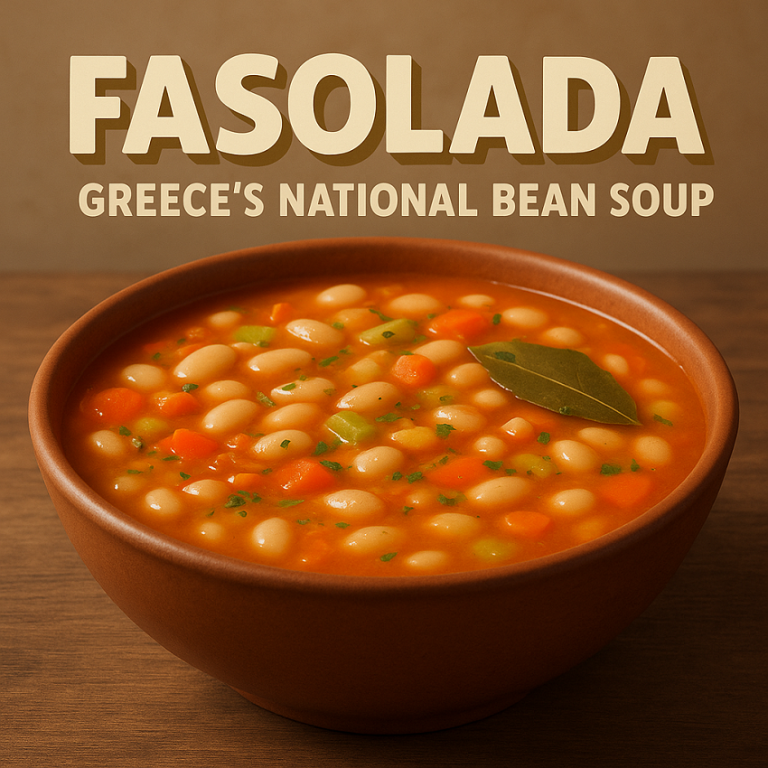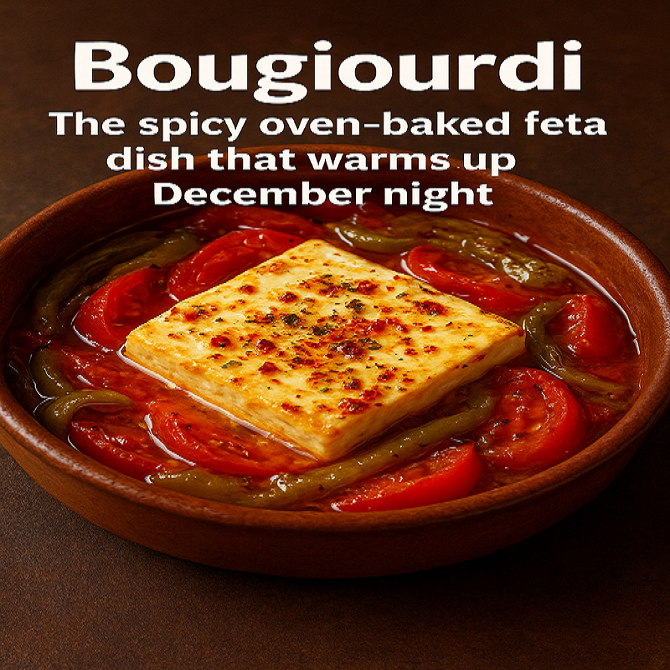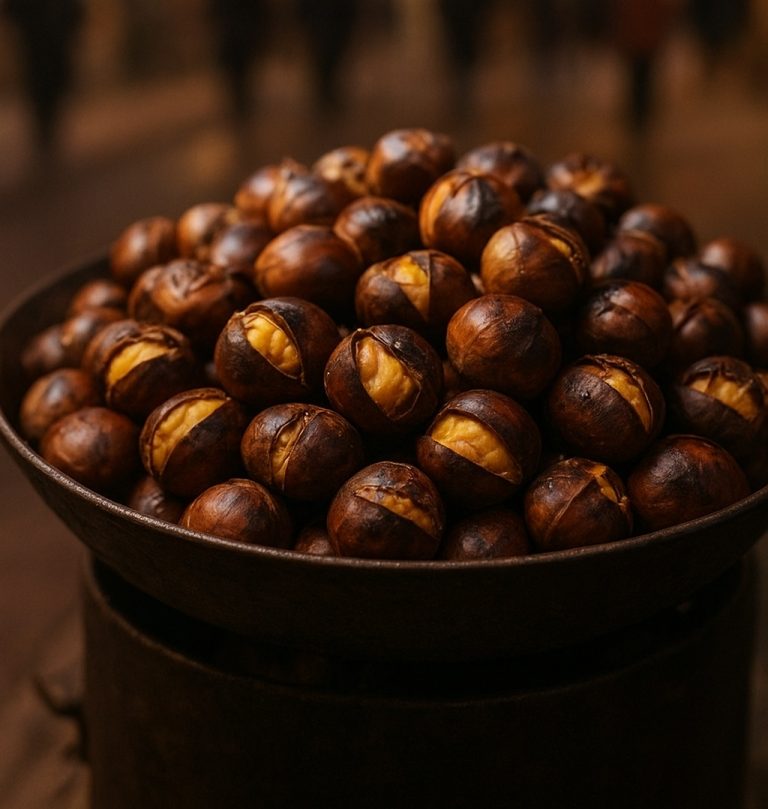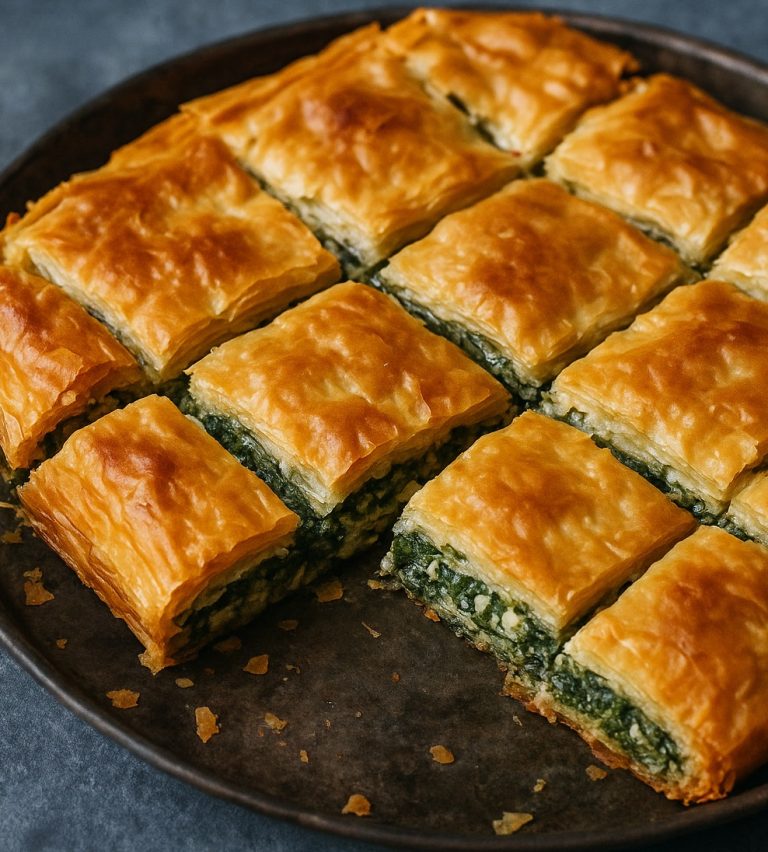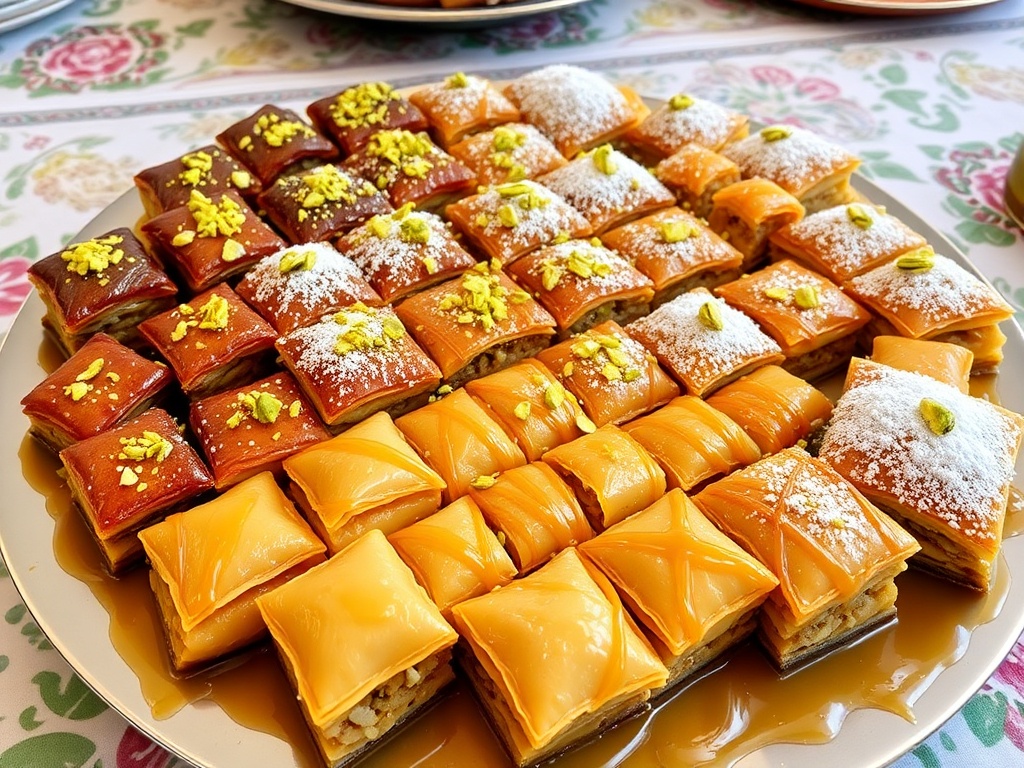
Greek baklava is a beloved dessert that embodies the rich culinary heritage of Greece. With its flaky layers of phyllo dough, aromatic spices, and a sweet syrup, this treat is a staple at celebrations, family gatherings, and festive occasions. Let’s explore the history, ingredients, preparation, cultural significance, and delightful variations of Greek baklava.
Historical Roots
The origins of baklava can be traced back to ancient civilizations, with both the Greeks and Ottomans claiming its creation. While many attribute its development to the Byzantine Empire, the dessert flourished in the Ottoman kitchens, where it was refined into the delicacy we know today.
In Greece, baklava became popular during the Ottoman rule, but each region has its own unique twist on the traditional recipe. The Greek version stands out for its distinct use of spices and sweeteners that reflect the country’s culinary traditions.
Historical accounts suggest that baklava was served in royal courts and during significant celebrations. Its elaborate preparation made it a symbol of wealth and hospitality, often reserved for special occasions.
Ingredients and Preparation
Greek baklava is characterized by its rich combination of flavors and textures. The key ingredients include:
- Phyllo Dough: Thin layers of pastry that create a flaky texture. The careful handling of phyllo is crucial, as it can dry out quickly.
- Nuts: Typically a blend of walnuts and almonds, finely chopped for a rich filling. Some variations may use pistachios for a different flavor profile.
- Spices: Cinnamon is the most common spice used, adding warmth and depth to the filling. Cloves or nutmeg may also be incorporated for additional complexity.
- Sweet Syrup: Made from honey and sugar, often flavored with lemon or orange zest for a refreshing touch.
Step-by-Step Preparation
- Layering the Phyllo: Start by buttering a baking dish and layering several sheets of phyllo dough, brushing each layer with melted butter to ensure a crispy texture. The more layers, the richer the baklava.
- Nut Mixture: Combine finely chopped walnuts, almonds, cinnamon, and sugar. Spread this mixture evenly over the phyllo layers.
- Building the Layers: Continue layering phyllo and nut mixture, finishing with several layers of phyllo on top. Some bakers add a sprinkle of sugar between layers for additional sweetness.
- Cutting: Before baking, cut the baklava into diamond or square shapes to help it bake evenly and absorb the syrup later. This step is essential for achieving the perfect texture.
- Baking: Bake in a preheated oven until golden brown and crisp. The aroma that fills the kitchen during baking is a delightful prelude to the treat.
- Soaking in Syrup: After removing the baklava from the oven, pour a hot syrup made from honey, sugar, and citrus over the hot pastry. Allow it to soak for several hours or overnight for optimal flavor. This soaking process is what gives baklava its signature sweetness and moistness.
Tips for Perfect Baklava
- Phyllo Dough Handling: Keep phyllo dough covered with a damp cloth while working to prevent it from drying out. If it becomes too brittle, it can break and ruin the layers.
- Nut Mixture Variations: Experiment with different nuts and spices. For instance, adding a hint of cardamom can introduce an exotic flavor.
- Serving: Allow the baklava to sit for several hours after soaking to ensure that the syrup is fully absorbed. This resting period enhances the flavors and textures.
Cultural Significance
Baklava is more than just a dessert in Greece; it is a symbol of hospitality and celebration. It is commonly served at weddings, religious holidays, and family gatherings. During events such as Easter and Christmas, baklava is a cherished treat that brings families together.
In Greek culture, sharing baklava signifies generosity and warmth. It is often accompanied by coffee or tea, enhancing the experience and allowing people to savor the rich flavors together. The act of serving baklava is often accompanied by stories, laughter, and the joy of togetherness, making it an integral part of social gatherings.
Regional Variations
While the basic recipe remains consistent, regional variations reflect local ingredients and preferences:
- Northern Greece: In regions like Macedonia, baklava may include a mix of different nuts and spices, creating a unique flavor profile. Some versions may also incorporate dried fruits like raisins.
- Crete: Cretan baklava may incorporate local ingredients like raki (a traditional spirit) or varying types of nuts, adding a distinct flavor and richness.
- Ionian Islands: Here, baklava can be made with a heavier syrup and a more pronounced use of honey. The use of local honey varieties can lend unique flavors to the dish.
- Cyprus: In Cyprus, baklava can feature a thicker, richer syrup and may include variations such as “yemista,” which includes additional fillings like chocolate or fruit.
Pairing Suggestions
Greek baklava pairs beautifully with a variety of beverages:
- Greek Coffee: The strong, aromatic coffee complements the sweetness of the baklava. The traditional preparation method enhances the experience.
- Herbal Teas: A light herbal tea, such as chamomile or mint, can balance the richness of the pastry.
- Dessert Wine: Sweet wines like Muscat or Samos wine enhance the flavors of the baklava and create a harmonious pairing.
Baklava in Modern Cuisine
In recent years, baklava has gained popularity beyond its traditional roots, inspiring chefs and home bakers to experiment with new flavors and presentations. Modern interpretations may include innovative twists, such as baklava cupcakes, baklava cheesecakes, or even baklava-inspired ice cream. These adaptations allow baklava to appeal to contemporary palates while honoring its classic essence.
Global Influence
Baklava’s widespread popularity has led to its inclusion in dessert menus around the world. Middle Eastern and Mediterranean restaurants often showcase baklava as a signature dish, allowing diners to experience a taste of Greece and its rich culinary traditions. Food festivals and cultural events frequently feature baklava, celebrating its history and the artistry behind its preparation.
Conclusion
Greek baklava is a timeless dessert that encapsulates the essence of Greek culture and hospitality. Its rich history, combined with fragrant spices and crunchy textures, makes it a beloved treat across generations. Whether served at a festive occasion or enjoyed as a sweet indulgence at home, baklava remains a cherished favorite that invites everyone to savor a piece of Greece’s culinary heritage.
As you take a bite of this exquisite pastry, let the flavors transport you to the sun-kissed shores of Greece, where tradition and sweetness unite in every delicious layer. Baklava is not just food; it is a celebration of life, love, and the joy of sharing moments with family and friends. Whether enjoyed during festive celebrations or as a simple afternoon treat, baklava continues to bring people together, creating sweet memories that last a lifetime.
